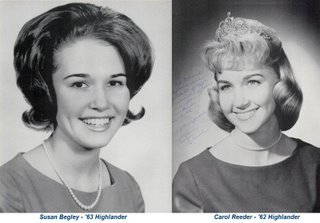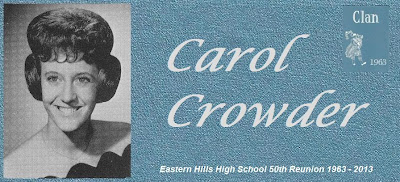Click or Clique: Positive and Negative Teen Social Groups
Clicks
Friend groups made up of kids who “click” are usually healthy. Kids who find each other through a common interest and positive shared values can offer each other a “home base” during the teen years. Healthy friend groups don’t need everyone to be exactly the same. People in healthy friend groups are there for each other, go to each other’s special events, support each other through hard times, and let people be individuals.Ariel has been part of the same friend group since third grade when she and four others were assigned a special project. They immediately clicked. Hanging out at school expanded into hanging out after school and on weekends. Ariel and one of the other girls joined a local theater group. Two others are on the field hockey team. Three of the girls spend lots of time at the dance studio. They like the friends they meet at their other activities too. But in the school halls, they like to touch base with each other. “The best part of my group,” says Ari, “is that I don’t have to feel like I’m being disloyal if I want to spend time with my theater buddies or if I want to bring someone along if we’re meeting up after school. But the friends in my group are the people who know me best. They’re the people I look for when I’m having a crisis.”
Shari agrees. “If we were all doing the same thing all the time, we wouldn’t have as much to talk about.” This group is open to new experiences and new people. They don’t need to cling together to feel okay but they are really glad that they have a place where they can be totally themselves.
Cliques
Cliques aren’t necessarily made up of people who click. These groups aren’t brought together by a genuine interest in each other. Instead, they are organized around power and popularity. Leaders of such groups often are charismatic and controlling. Members of the group rely on exclusivity and very strict internal codes to establish and maintain the idea that they are something special. They do everything together and have no tolerance for any member branching out to friends outside the group.The secret that these groups don’t want anyone else to discover is that most of the members are terribly insecure. Lacking the self-esteem and confidence to be their own person, each instead relies on the membership in an exclusive club for her or his identity.
The problem with this strategy is that the group can easily take that identity away. It’s not unusual for a clique to turn on a member for some real or imagined challenge to either the values or the leadership of the group. No one wants to be that girl or that guy who is evicted from the group. Conformity to the whims of the leaders is the price paid for membership.
Sam is a girl who is used to being one of the popular kids. For the past two years, she’s hung out with the most popular girls in school. Everyone knows who they are. They all have the same “look,” a kind of studied casualness: name-brand jeans, sleek tops, cropped jackets. They sit together in the lunchroom and hang out together in the halls. They’re known for making critical comments about other people’s dress, hair styles, or even their jobs. (Working retail is cool; waitressing definitely is not.) This is the stuff that makes for mean girls or mean guys. By picking on or bullying others who look different, who like different things, or have different values, the clique maintains their exclusivity and the illusion of their superiority.
Life changed for Sam when she fell for a guy the group decided wasn’t “cool.” Paired up in biology lab, the two found that they liked the same music and had the same cynical humor. It was like at first sight. “The last couple of months has been wonderful and awful,” says Sam. “The relationship with my boyfriend is something special. But the group isn’t even interested in knowing what he’s like. He’s really, really sweet and they just rode him and me. I finally had enough but it’s been hell. I thought those girls were my friends but I just have to get away from them now. I’m a senior and and everyone’s got their friends. If it weren’t for my boyfriend, I’d have nobody.”
Sam has had to rethink all of her ideas about who her real friends are. She was already getting impatient with the conformity required of her clique but she thought they liked her enough to be happy for her new relationship. She wasn’t prepared for the insults that came with asserting herself. “I went home crying for weeks, ” she says. “But I finally figured out that I have a right to be myself, not just what the group wants me to be. My boyfriend and his friends are really funny and laid back. I never realized how much pressure it was to be in with my clique.”
What are the essential differences between a healthy friend group that clicks and the group that is a clique? Take a look at this comparison:
|
Click
|
Clique
|
|
People who are drawn together by a mutual interest or value system |
People who are drawn together by the need to be special and popular. |
|
Members are encouraged to have other friends too and to introduce new
members into the group |
Members may only be friends with each other and are discouraged from
bringing new members into the group – unless the new person adds to the
groups "coolness" factor |
|
Individual members are supported in their individual interests by the
group. Group members celebrate each other’s individual successes. |
Members are discouraged from being involved in anything that takes time
and attention away from the group. |
|
Members are valued for their individuality. |
Members must conform to the group’s idea of what is cool dress and cool
behavior |
|
Natural leaders may emerge but the leaders don’t need to be in charge to
feel good about themselves. They are happy to have others take on leadership
as well. |
The leader(s) hold on tight to their leadership role and exclude anyone
from the group who might threaten that position. |
|
If people are sometimes crabby or mean, it’s just because they are having
a bad day. |
If people are mean, it’s meant to reinforce the idea that the group is
exclusive and superior. |
Teens who find a friend group that “clicks” grow into adults with a healthy self-esteem. They know how to make solid relationships with people who can be there for each other through good times and bad. Teens whose only social group is a clique are often insecure in their relationships and lack the self-confidence to assert their creativity or individuality. Fortunately, many do grow out of the need for superiority and artificial popularity once they get out of high school. Others continue to hang their identity on being better than the next person and are mystified that they can’t find mutually trusting relationships.
How a parent can help
How can a parent help kids find other kids who “click” and stay away from the “cliques”? It starts way before the teen years. As with most things, helping kids develop the social skills and self-confidence needed to find a healthy friend group takes some parental effort. Good modeling, opportunities to develop healthy interests and relationships, and good values are the keys.- Model diversity in your own friendships. Talk about how knowing different kinds of people enriches your life in different ways.
- Help your child develop good social skills. Kids who know how to be a good friend are kids who attract healthy friendships.
- Foster empathy skills. Kids who can walk in another’s shoes are not likely to participate in hurting or bullying others. (See: Manners to Empathy: Faking it is a place to Start.)
- Follow your kid’s lead in finding the activity or sport that they are passionate about. Good friendships often develop from participating in a shared interest.
- Help your child develop a mind of his or her own. Kids who have confidence in their own values are less likely to fall in with the crowd. Encourage assertiveness about the things that matter.
- If your child does fall into a clique, don’t be critical of the “friends.” Do be critical of any mean behavior. Go to the root of the problem and talk to your young person about what she or he is getting out of being in a group that won’t let people be who they are and whose popularity depends on putting other people down.


.JPG)










